Welcome to our free classical music site

Do you write about classical music? Are you a blogger? Want to team up with Classical Connect? Send us a message, let's talk!

Do you write about classical music? Are you a blogger? Want to team up with Classical Connect? Send us a message, let's talk!
December 24, 2012. Merry Christmas to all!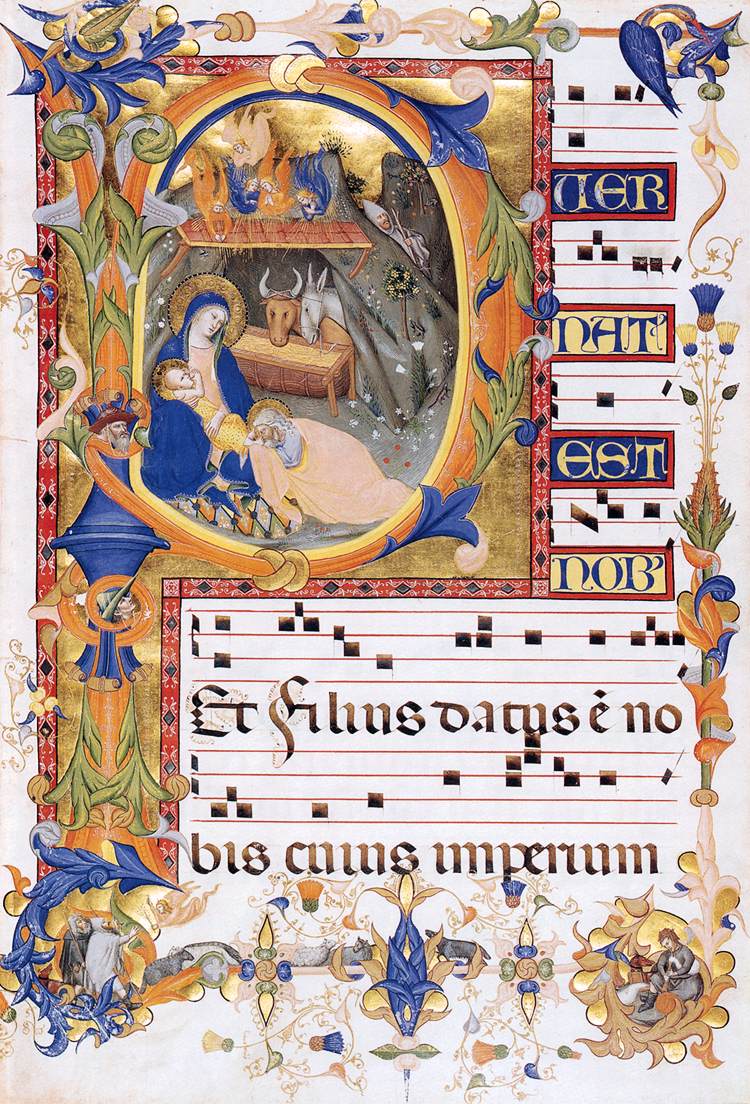 The wonderful leaf from a Choir book you see here comes from 1395 and contains a little bit of music and a little bit of art. The music is the introit (entrance) to the Mass for Christmas Day. The picture represents the Nativity and the Annunciation to the Shepherds. This illustration was created by a monk, Don Silvestro dei Gherarducci who went on to become a rather well known painter (but not as famous as his younger partner, Lorenzo Monaco, who worked with Gherarducci at the same monastery of Santa Maria degli Angeli in Florence).
The wonderful leaf from a Choir book you see here comes from 1395 and contains a little bit of music and a little bit of art. The music is the introit (entrance) to the Mass for Christmas Day. The picture represents the Nativity and the Annunciation to the Shepherds. This illustration was created by a monk, Don Silvestro dei Gherarducci who went on to become a rather well known painter (but not as famous as his younger partner, Lorenzo Monaco, who worked with Gherarducci at the same monastery of Santa Maria degli Angeli in Florence).
And here is the first movement of the first part, Chorus, of Johann Sebastian Bach’s Christmas Oratorio. It starts with Jauchzet, frohlocket, auf, preiset die Tage, or Celebrate, rejoice, rise up and praise these days, a good command to follow. The performance is by the Monteverdi Choir and the English Baroque Soloists under the baton of Sir John Eliot Gardiner (courtesy of YouTube).
PermalinkDecember 17, 2012. Zoltan Kodály. One of the most prominent Hungarian composers of the 20th century, fame he shares with Béla Bartók, Zoltan Kodály was born on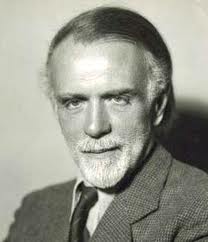 December 16th of 1882 in a small town in central Hungary. As a child he studied the violin with his father, and at the age of 18 entered Budapest University to study languages and, simultaneously, the Hungarian Academy of Music, a composition class of Hans von Koessler. In 1907 he traveled to Paris to study with Charles Vidor at the Paris Conservatory. Starting 1905 he went on regular field trips collecting folksongs, often in the company of Béla Bartók, his lifetime friend. The folk tunes formed the basis of many, highly sophisticated, compositions of Kodály. From 1912 he taught at the Budapest Academy of Music (Antal Dorati was one of his pupils). Here are his Dances of Galánta, composed in 1933. Galánta is a small market town on the old railway line between Vienna and Budapest, where Zoltan spent seven years of his childhood. At that time, a famous gipsy band lived there. According to Kodály, the principle melodies of the Dance come from that music. Throughout his adult life, Kodály was very interested in the problems of music education. The Hungarian music education program that he developed in the 1940s became the basis for what is called the "Kodály Method". Kodály, who was born in the Dual Monarchy and had his most productive period during the Hungarian Republic, lived long enough to see the advent of the Hungarian Peoples Republic – but not the end of it: he died in 1967, at age 84.Permalink
December 16th of 1882 in a small town in central Hungary. As a child he studied the violin with his father, and at the age of 18 entered Budapest University to study languages and, simultaneously, the Hungarian Academy of Music, a composition class of Hans von Koessler. In 1907 he traveled to Paris to study with Charles Vidor at the Paris Conservatory. Starting 1905 he went on regular field trips collecting folksongs, often in the company of Béla Bartók, his lifetime friend. The folk tunes formed the basis of many, highly sophisticated, compositions of Kodály. From 1912 he taught at the Budapest Academy of Music (Antal Dorati was one of his pupils). Here are his Dances of Galánta, composed in 1933. Galánta is a small market town on the old railway line between Vienna and Budapest, where Zoltan spent seven years of his childhood. At that time, a famous gipsy band lived there. According to Kodály, the principle melodies of the Dance come from that music. Throughout his adult life, Kodály was very interested in the problems of music education. The Hungarian music education program that he developed in the 1940s became the basis for what is called the "Kodály Method". Kodály, who was born in the Dual Monarchy and had his most productive period during the Hungarian Republic, lived long enough to see the advent of the Hungarian Peoples Republic – but not the end of it: he died in 1967, at age 84.Permalink
December 16, 2012. Beethoven! Today is the day to celebrate the 242nd anniversary of Ludwig van Beethoven’s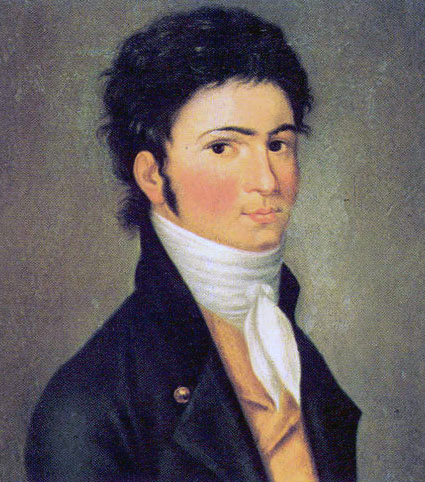 birthday. Here’s Sviatoslav Richter’s performance of Beethoven’s Piano Sonata no. 1 in f minor, op. 2, no.1. The very first one of the eventual 32, the set that is still the pinnacle of piano literature, this sonata was written in 1795. The young Beethoven dedicated it to his teacher of several years, Franz Joseph Haydn. The portrait, by Carl Traugott Riedel, was made a bit later, in 1801.
birthday. Here’s Sviatoslav Richter’s performance of Beethoven’s Piano Sonata no. 1 in f minor, op. 2, no.1. The very first one of the eventual 32, the set that is still the pinnacle of piano literature, this sonata was written in 1795. The young Beethoven dedicated it to his teacher of several years, Franz Joseph Haydn. The portrait, by Carl Traugott Riedel, was made a bit later, in 1801.
PermalinkDecember 10, 2012. Three Francophone composers. César Franck was born in Liège, in what is now Belgium, on December 10, 1822, but he spent most of his life in France. His ambitious father wanted Franck to become a virtuoso pianist, à la Franz Liszt, and enrolled him in the Royal Conservatory of Liège. In 1835 he brought César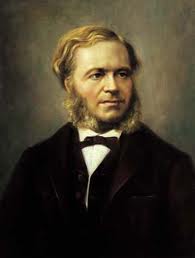 and his younger brother to Paris to study privately. Two years later César entered the Conservatory (his father had to take French citizenship, as at that time the Conservatory didn’t accept “foreigners”). César studied piano, counterpoint, and eventually took organ classes with François Benoist (Benoist was the professor of organ at the Conservatory for half a century, and, in addition to Franck, had as his students Camille Saint-Saëns, Georges Bizet, Léo Delibes, and Adolphe Adam). After a brief sojourn to Belgium, Frank returned to Paris to become a teacher and organist. That was also the time he started seriously composing. He became the organist at the newly constructed church of Saint-Clotilde, which had a beautiful organ built by the famous Aristide Cavaillé-Coll, who also built organs for Notre Dame de Paris andLa Madeleine, reconstructed the great organ of Saint-Sulpice and worked with many other important churches in France and beyond, as well as built organs for major concert halls, such as the Great Hall of Moscow Conservatory. After Benoist’s death, Franck was offered a position at the Conservatory. In 1886 he wrote his Violin Sonata in A Major, probably his most famous composition. The sonata was a wedding present for a fellow Liégeois, the violinist Eugène Ysaÿe. It became one of the most popular pieces in the violin repertoire, and we have many recordings of it in our library. You can hear it performed by the Canadian violinist Kai Gleusteen, who spent some time studying in Paris (here). Catherine Ordronneau is on the piano. Franck continued composing for the rest of his life: his notable Symphony in D Major was written in 1888 and three organ chorals in 1890. He died in Paris on November 8,1890. The funeral mass, attended by practically all notable French composers of the time, was held in Franck’s church of Sainte-Clotilde.
and his younger brother to Paris to study privately. Two years later César entered the Conservatory (his father had to take French citizenship, as at that time the Conservatory didn’t accept “foreigners”). César studied piano, counterpoint, and eventually took organ classes with François Benoist (Benoist was the professor of organ at the Conservatory for half a century, and, in addition to Franck, had as his students Camille Saint-Saëns, Georges Bizet, Léo Delibes, and Adolphe Adam). After a brief sojourn to Belgium, Frank returned to Paris to become a teacher and organist. That was also the time he started seriously composing. He became the organist at the newly constructed church of Saint-Clotilde, which had a beautiful organ built by the famous Aristide Cavaillé-Coll, who also built organs for Notre Dame de Paris andLa Madeleine, reconstructed the great organ of Saint-Sulpice and worked with many other important churches in France and beyond, as well as built organs for major concert halls, such as the Great Hall of Moscow Conservatory. After Benoist’s death, Franck was offered a position at the Conservatory. In 1886 he wrote his Violin Sonata in A Major, probably his most famous composition. The sonata was a wedding present for a fellow Liégeois, the violinist Eugène Ysaÿe. It became one of the most popular pieces in the violin repertoire, and we have many recordings of it in our library. You can hear it performed by the Canadian violinist Kai Gleusteen, who spent some time studying in Paris (here). Catherine Ordronneau is on the piano. Franck continued composing for the rest of his life: his notable Symphony in D Major was written in 1888 and three organ chorals in 1890. He died in Paris on November 8,1890. The funeral mass, attended by practically all notable French composers of the time, was held in Franck’s church of Sainte-Clotilde.
Olivier Messiaen, without a doubt one of the greatest French composers of the 20th century, was born on December 10, 1908. As much an innovator as Franck was a traditionalist, Messiaen shared his love for the organ. As Franck years earlier, Messiaen was appointed the organist of a Paris church, in his case that of Église de la Sainte-Trinité, not far from Gare Saint-Lazare a position which, like Franck, he held for the rest of his life. In 1940, at the outbreak of World War II, Messiaen was drafted into the French army as a medical auxiliary (he had poor eyesight). He was captured by the Germans soon after, at Verdun, the site of the terrible battles of the previous war, and sent to a camp. There he met a violinist, a cellist and a clarinetist. He wrote a trio for them, and eventually incorporated it into the Quartet for the End of Time, creating a part for himself on the piano. It was first performed in January 1941 in the camp to an audience of prisoners and prison guards. We’ll hear two movements from the Quartet: Movement III, Abyss of the Birds for solo clarinet (here) and Movement VI, Dance of fury, for the seven trumpets, for the full quartet (here). It’s performed by Artisict Voyage, Yana Reznik music director (courtesy of YouTube).
We don’t have the time and the space for the most famous of the three composers, Hector Berlioz, who was born on December 11, 1803, but here’s the first movement of his masterpiece, Symphonie fantastique. Igor Makevich is conducting the Rundfunk-Sinfonieorchester Berlin. Just an incidental link to Messiaen: Berlioz’s funeral was held at the new Église de la Sainte-Trinité (he died on March 8, 1869), where 62 years later Messiaen would become the organist.
And of course later this week we’ll celebrate the 242nd anniversary of Ludwig van Beethoven’s birthday.
PermalinkDecember 3, 2012. Padre Antonio Soler and more. Antonio Soler was born around December 3, 1729 (we know that he was baptized that day) in Olot, a small town in Catalonia. When he was six, he entered the choir school for boys at the ancient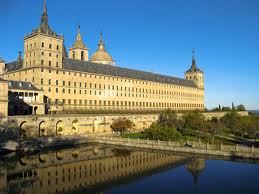 Montserrat Monastery. When he was 15, he was appointed the organist at the Cathedral of La Seu d'Urgell in the Catalan Pyrenees. He was ordained at the age of 23 – by then he was already employed at the Royal Court in El Escorial. Soler wrote 150 keyboard sonatas (and many more works as well). It is not known whether he studied with Domenico Scarlatti, who lived in Madrid from 1733 to his death in 1757, but it seems that the influence of the older master’s music is strong: listen, for example, to Sonata in D Major (it’s performed by the Ukrainian pianist Elena Ulyanova). Though he served the King and lived many years in the Royal residence, no known portraits of Padre Antonio Soler exist. The picture above depicts El Escorial where Soler spent more than half of his life.
Montserrat Monastery. When he was 15, he was appointed the organist at the Cathedral of La Seu d'Urgell in the Catalan Pyrenees. He was ordained at the age of 23 – by then he was already employed at the Royal Court in El Escorial. Soler wrote 150 keyboard sonatas (and many more works as well). It is not known whether he studied with Domenico Scarlatti, who lived in Madrid from 1733 to his death in 1757, but it seems that the influence of the older master’s music is strong: listen, for example, to Sonata in D Major (it’s performed by the Ukrainian pianist Elena Ulyanova). Though he served the King and lived many years in the Royal residence, no known portraits of Padre Antonio Soler exist. The picture above depicts El Escorial where Soler spent more than half of his life.
Also this week: the great Finnish composer Jean Sibelius was born on December 8, 1865 in the south of Finland, then part of the Russian Duchy, into a Swedish-speaking family. Sibelius, born Johan, started using the French-sounding name Jean while he was a law student at the Imperial Alexander University. He was much more interested in music than law, so he quit the University and entered the Helsinki Music School. He went on to study in Berlin and Vienna. Sibelius, who wrote during the period of flourishing experimentation in classical music, may sound rather conservative to the modern ear. Still, his seven symphonies are masterly, his Violin concerto is one of the most popular, and so are his symphonic poems Finlandia and the Karelia suite. Sibelius wrote his First Symphony when he was 35, and composed very intensely for the following quarter century. Then, around 1926, he stopped and didn’t write a single work in the last 30 years of his life. He died on September 20, 1957 at the age of 92. Here’s the rousing Intermezzo, from the Karelia Suite Op. 11. It’s performed by the Oslo Philharmonic, Mariss Jansons conducting (courtesy of YouTube).
And finally, a performance note. The Lyric Opera of Chicago just started a run of Donizetti’s Don Paquale. The role of the Don is sung by the bass-baritone Ildebrando D'Arcangelo whose voice has an enormous range. In 1708 George Frederic Handel composed a “dramatic cantata” Aci, Galatea e Polifemo. Among the cast of characters is a Cyclops named Polifemo. One of his arias, Fra l'ombre e gl'orrori has a range of almost three octaves! One wonders who was the Neapolitan singer that Handel had in mind for the role. You can listen to the amazing performance by Ildebrando D'Arcangelo here (courtesy of YouTube).
PermalinkNovember 26, 2012. Jean-Baptiste Lully. The great French Baroque composer, Jean-Baptiste Lully was actually born an Italian on November 28, 1632 in Florence. As a young child, he received little education and learned only the basics of playing the guitar, probably from a Franciscan friar. Apparently, he was pretty good because in 1646 Roger de Lorraine, the chevalier de Guise, took the lucky boy to France where he entered into the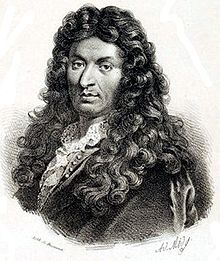 service of one of the noblest houses of the kingdom, that of Mademoiselle de Montpensier, the eldest daughter of Gaston, the Duke of Orléans and a brother of Louis XIII. Lully was taught to dance and studied music with Nicolas Métru, an organist and viol player who also taught Couperin.
service of one of the noblest houses of the kingdom, that of Mademoiselle de Montpensier, the eldest daughter of Gaston, the Duke of Orléans and a brother of Louis XIII. Lully was taught to dance and studied music with Nicolas Métru, an organist and viol player who also taught Couperin.
In 1652, Mlle de Montpensier was exiled (she was one of the key leaders of the Fronde) and Lully left her court. A talented dancer and musician, his skills brought him to the attention of the young King Louis XIV and he became a dancer in the king’s service. After composing some music for the Ballet de la nuit, Louis XIV appointed him leader of the Petits Violons, the king’s own private violin band. Lully’s favor in the king’s court continued to grow and in 1671, he was appointed the Superintendent of Music. Eventually, he was even given complete control over all music performed in France by the king.
The king liked to dance, and Lully composed many ballets for the court. His music changed the genre, introducing much livelier ballets in place of the slow, stately older dances. With the aid of Molière, Lully also created the genre of comédie-ballet, which mixed spoken plays with dance and music numbers. As Louis XIV aged, however, his interest in ballet, as well as his ability to dance, waned and in response Lully turned his attention on operas. At that time the Italian opera, that of Monteverdi, Cavalli, and even lesser composers, reigned supreme throughout Europe (the first public opera house was opened in Venice in 1637). Still, Lully found it unsuitable for the French language. In his operas Lully removed the divisions between recitative and aria and, using good librettos by the dramatist Philippe Quinault, made the story move faster. It is his operas that made Lully the foremost composer in France.
In January of 1687, while conducting a performance, Lully struck his toe with a long staff that he was using to beat time. The wound became gangrenous, yet he refused to have the toe amputated. The gangrene inevitably spread and on March 22, Lully died from the injury.
We’ll hear the aria Belle Hermione, hélas, hélas from Cadmus et Hermione, a "musical tragedy" on the libretto by Philippe Quinault. It is sung by the wonderful French baritone Gérard Souzay, with Orchestre de la Société du Conservatoire Paris (courtesy of YouTube, here).
Permalink